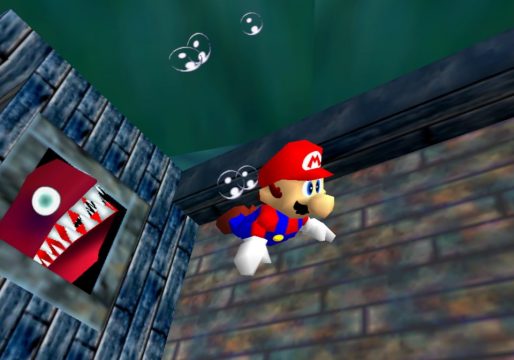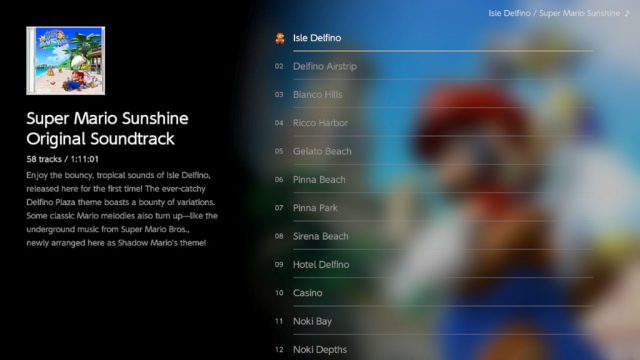All three games are masterclasses in design; a minimalist interface gets fans right into the action; music player is easy to use and packed with tunes; emulation is solid, and upgrades to presentation help all three games look better than ever
Some of the failings of the games from their original releases are still present; no GameCube controller support for Sunshine; extras are lacking which might irk some players
Going into a compilation like Super Mario 3D All-Stars can be tricky in terms of forming an evaluation. Is the goal to analyze these games with a new perspective? To rate the quality of the compilation itself? Does it matter if the games are being emulated or built from the ground up for the system they’re being played on? All are good and valid questions, and I thought about these and more as I played All-Stars. In the end, while I can appreciate that some fans might have been hoping for more of a celebration of Mario’s 35th anniversary in All-Stars, the games themselves are more than enough of a form of jubilation all on their own. While there are some areas that Nintendo dropped the ball, these are three of the greatest games ever made and should not be missed by Switch owners.
To be clear, this collection is almost entirely about the games. There’s a music player that can be accessed from the title screen that’s stuffed with tunes to enjoy, which was a nice bonus. However, beyond that there isn’t much else to speak of for All-Stars other than being a housing for three incredible pieces of classic software. Yet, it’s not like Nintendo hasn’t already set this precedent. When Super Mario All-Stars launched on SNES back in 1993, that compendium also only offered fans the games and nothing else. Of course, there’s a bit more pomp and circumstance surrounding 35 years of history as opposed to the eight years that had passed at that point in time. To not have anything other than a blurb of text for each game and a music player is somewhat suspect on Nintendo’s part. If this is an anniversary one can make the argument that there should have been more revelry.
Yet, while I can empathize with some frustration over a seeming lack of emotional investment in Mario’s birthday, I also can’t help but look at the circumstances in which All-Stars is being released. The pandemic has put a damper on all sorts of plans and projects, including those by Nintendo, so maybe All-Stars is somewhat barren as a result of that. Ultimately, however, what matters most is that these three games play and look stunning. For those who have never experienced any of this trio of Mario games, All-Stars is a nearly perfect way of doing so for the first time. The quality of Super Mario 64, Super Mario Sunshine, and Super Mario Galaxy is of such a level that any complaints about a lack of “extras” becomes wholly inconsequential.
When looking back at the history of Mario’s forays into 3D games, it’s fascinating to realize that there haven’t necessarily been very many since 1996 after Super Mario 64 launched. It’s these three games plus Super Mario 3D Land, Super Mario Galaxy 2, Super Mario 3D World, and Super Mario Odyssey. That’s seven games across almost a quarter century. Part of this is owed to the extreme care with which Nintendo crafts every installment in the series. Typically, fans can expect one 3D platformer per Nintendo console, and that sole entry on each for the past 24 years has always been stunning. Thus, it’s hardly surprising that the three titles on display here so effortlessly dazzle and mesmerize.
Let’s briefly get into the merits of each of the three games:
Super Mario 64
The first 3D Mario game also remains one of the most approachable and enjoyable. Nintendo had to write the rule book for 3D platformers as fans know them today when creating Super Mario 64, and in 1996 the developer managed to successfully set the blueprint that is largely adhered to even today. Mario’s suite of moves are graceful and smooth, allowing the plumber to run and jump and dive and fly with ease. Every world within the paintings lining the walls of Peach’s castle are filled with secrets to discover, enemies to defeat, and creative sights to see. If there’s any flaw to be found here it’s that the in-game camera can still be finicky, occasionally getting stuck in the world geometry. Incorporating an entirely new camera system might have helped alleviate this issue, but it also would have detracted from the experience. Super Mario 64 is in the proverbial top three of the most important games ever made and fans deserve to play it as it was when it first came out. The higher resolution makes this the prettiest version of Super Mario 64 to have been released, with its creative worlds and character designs crisper and clearer than ever before. This is an instance of upscaled graphics working well.
Super Mario Sunshine
It took six years between installments, but the wait was worth it for Super Mario Sunshine. Only the second ever 3D Mario game, Sunshine was bigger, flashier, and even more ambitious than Mario 64. There are a ton of secrets to uncover on Isle Delfino, and it is very easy to get sucked into this tropical paradise. The setting is a huge part of Sunshine’s allure, taking place on sandy beaches surrounded by gorgeous, rippling water. It remains one of the most unique locales in series history. The addition of FLUDD grants new mechanics that the series had never seen before, including the ability to hover, spray water, and more. Sunshine has become slightly divisive in the years since its release, but there isn’t much substance to the largely manufactured criticism the game gets these days. I will say that the camera can be problematic on occasion, wanting to fight with the manual input that the player has over it. Also, some of the physics associated with Mario’s moves can be overly assertive; I died many times to Mario being forced into a slide or launched at an extreme angle during my play session. To say this is the lesser of the three games in this compilation is like choosing the least impressive of an athlete’s three Olympic Gold Medal victories. It’s a winner, it’s great, but Sunshine does have some quirks.

Super Mario Galaxy
From a pure technical standpoint, Super Mario Galaxy is arguably the most impressive of the three games here. The use of gravity, with Mario bounding between small planetoids and utilizing shifting degrees of gravity to do everything from explore to solve puzzles, remains the zenith of the series. It’s hard to put into words just how satisfying the rhythm of Galaxy is. Every world is visually arresting, the sense of scale is mind boggling at times, and the precision of Mario’s movements is uncanny. The orchestrated soundtrack is one of the best in the series, which makes Galaxy as much fun to listen to as it is to play. This version allows for a pair of Joy-Con to be used in lieu of a Wii Remote and Nunchuk, and I feel that this is the optimal setup to experience Galaxy in its purest form. The motion controls aren’t essential, but Nintendo baked them into Galaxy in such a way that the game doesn’t have quite the same flow without them. That said, playing with a Pro Controller works just fine, with that pad’s built-in gyro being used to maneuver the pointer. Handheld mode is also serviceable, with a press and tap of the touch screen the means by which to collect and shoot Star Bits.
One last bit of frustration I had came from the lack of GameCube controller support in Sunshine. Switch has a GameCube controller adapter that was produced for Super Smash Bros. Ultimate, so the exclusion of this option makes very little sense. The opportunity for fans to use the same GameCube controller to play with that they used for the original Sunshine is a missed opportunity that I sincerely hope is patched in the future. As it stands, the omission comes across as some glaring tone deafness on Nintendo’s part. Still, other than this and the handful of other quirks I mentioned above, this is a wonderful compilation. What All-Stars lacks in extras and celebratory content, it more than makes up for with a boatload of music to enjoy and three masterwork video games to play. It is not hyperbole to say that any Switch collection is incomplete with Super Mario 3D All-Stars in it.




 ShareThis
ShareThis






